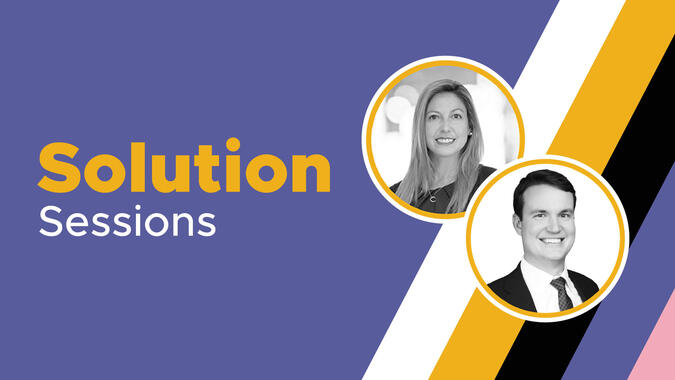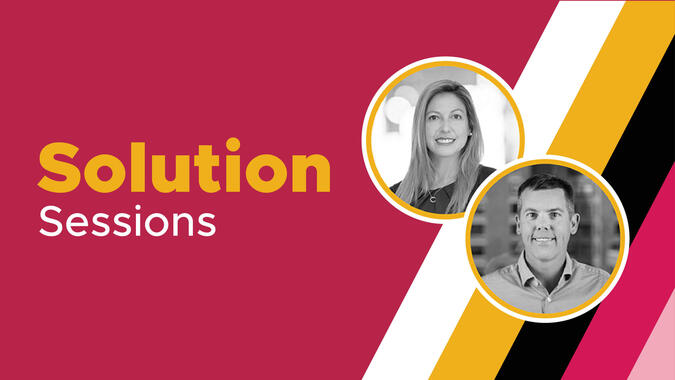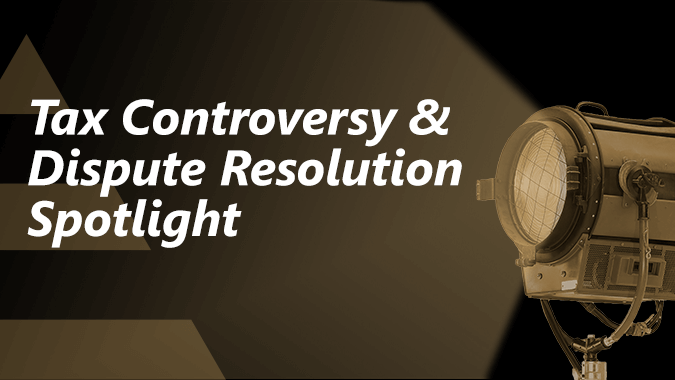Transforming Your Not-For-Profit Data into Powerful Insights
- Published
- May 9, 2024
- Share
In this live demo, EisnerAmper professionals discuss how you can utilize Workday Adaptive Planning to configure a financial planning and analysis software solution to not only meet your needs, timeline and budget but also transforms your organization.
Transcript
Candice Meth: Hello everyone. My name is Candice Meth and I'm the national leader of not-for-profit services at EisnerAmper. I'm also the partner in charge of solutions for the firm and it's in that spirit that we bring you today's program. I can think of no better solution for our not-for-profit clients than the software we're going to be showing you today. And with that, I'd like to introduce the colleagues joining me on today's program. Marc Moskowitz is a partner with our firm with over 30 years of experience with finance transformation, a CFO advisory services, enterprise planning and business analytics. Joining us is also Kyle Nesslar. Kyle is the director who oversees our Workday Adaptive Planning, and he works with many nonprofits as well as other industries. And his various other industries include corporate finance, financial services, healthcare and hospitality.And Kyle is going to be showing us a lot about this product today.
And then finally joining us is Caitlin Westhoven. Caitlin is our client experience specialist and Caitlin works with our various clients on their Workday Adaptive Planning and helps in the facilitation of ERP integrations and stays close to our clients to make sure that they're having a great experience with their software. And so with that, I'd really just like to start out by asking a few questions. So Marc, are there any specific types of nonprofits or size of nonprofit that your team works with to help transform their planning and reporting and analytics?
Marc Moskowitz: Yeah, Candice. We partner with a variety of nonprofits including associations, museums, aquariums, zoos, special social impact organizations, grant giving organizations. We work with very small nonprofits with finance teams of one to very large international nonprofits that may plan decentralized across multiple currencies across the globe. But the common denominator on all of that is that we want to have long-term partnerships with our clients and we want to make sure that the outcomes are transformative using industry best practices and principles.
Candice Meth: Absolutely. And I take your point that our sector is very diverse, but I imagine in your experience in working with these clients, you've seen some common challenges. What do you think are the most common challenges amongst nonprofits in terms of planning and reporting?
Marc Moskowitz: That's a really, really good question. I think I'm going to start answering that with what the clients want. And what our clients want most is to have financial and operational insights that they can trust. And they really want to be able to maximize their data so that they can optimize resources and they're in a position that they can adapt to any kind of changing situations quickly. I mean, simply put, our nonprofits really want to be able to report and plan across their programs, their departments, their projects, their grants, their funds in a way that is with minimal manual preparation and manipulation of data. And really to be able to realize that, the biggest obstacle that we see and our clients share with us is data that is siloed and making sure that data that is stored across our organization is easy to access and it's connected. So I would say that's the biggest obstacle and challenge that we help solve for our clients.
Candice Meth: Absolutely. And Kyle, as the director of Workday Adaptive, how does your team help our clients resolve those types of challenges?
Kyle Nesslar: Workday Adaptive Planning is an easy to use and configured cloud-based solution where all required actual planning and operational data can be stored in one centralized system as a single source of truth. And ultimately it uses three different reporting tools to accomplish that. We have active dashboarding, which is used for trend identification and real-time planning. We have self-service, web-based reporting, which is used by the end users for their month-end experience analysis, things like that. And ultimately ad-hoc queries by the finance team or other professionals in the organization. And lastly, the Office Connect platform which connects Adaptive directly to products like Excel and PowerPoint that is used to perform presentation quality reporting for leadership finance committees or other interested external outside third parties. So that's what I'm going to ultimately be here to show you in the tool today. And with that I will jump into it. So let me move some things around here and start my screen share. Let me get this one. Cool.
So now everybody should be seeing me live in the tool. And just to start, I want to start out with a couple of very just high level comments on this. So users can control the home page that they see when first logging in, so wherever they think they're going to mostly utilize the tool for that can be customized for each specific user. So in this case mine starting with the active dashboarding and also it's got a completely configurable security system where FP&A can control all aspects of how the end users will ultimately utilize and experience the tool. So with that, I'm going to take you through some of these dashboards we have.
What you can see here is just a very high level summary scorecard with some real control totals that the organization may look at that are important to them. And in these we've got things like revenue, cost of goods sold, expenses, changing net assets. That'll just give us a quick snapshot of where we might be either period to date or year to date. And the greatest part about this piece is everything you can drill into any of the information that's in the system. So ultimately if I wanted to look at my expenses and see, hey, what is this 3.6 really made up of? I can by a left click come in and actually get a breakdown by department where I can see my GNA is making up just over a million dollars all the way through my different departments down to product, which is maybe $128,000. But then in addition to that, I can continue to drill in to get as granular as I want in the system where if I wanted to now see what my GNA totals are made up by account, I click on that.
It brings me to another screen where now I'm seeing of that GNA spend, which is 1,074,000, how it's made up of throughout what I'm spending my money on, whether it's technology, wages and benefits, professional things or fees, anything that's ultimately important to your organization. And then with a simple click of a button, I could hit this back. It takes me right back to the original screen I was on. And on this, we have a couple of other high level what we call scorecards in Adaptive where the first one is a very general scorecard with our natural set of accounts where we can get both month to date or year to date variance analysis just for a quick snapshot along with even a micro trend chart that shows me how I'm trending in these various groups for actuals.
In addition to that, we can create what we call functional scorecards, which maybe I just want to look at expenses by my departments and get a quick snapshot of variance analysis around those where I can see, hey, my education in dev is under budget by 46, whereas my market growth revenue is over. And again, just simple trend charting for actuals on the tool. And you can see here I've got several dashboards along the top here that we're going to go through. The next is just a simple statement of activities which should look very familiar to everybody on this webinar where it just covers our basic high-level GL accounts and what I want to call out here is a couple of different things. This can be used for end users to input their budgets and ultimately align actuals with plan to create a true full-year forecast.
And what I'm going to show you here is there's a couple of different color options. We've got green, which indicates that that's actuals, so that's coming from whatever your source system is and any ERP that you might use can be automatically integrated into Adaptive with the push of a button. There is no systems that it cannot connect to and the black is what our plan data is. So this is what is making up of maybe some high-level plan data totals where they can interact together and ultimately you can start to overlay actuals as they come in period over period to create a true rolling month end forecast for all end users.
The next one here I want to talk about is these are going to get a little more granular into specific maybe departments of the organization and how they track things because as I indicated earlier, not only can we track high-level financial data, we can track very specific operational data sets. So if I'm in charge of my membership organization, I can see how many members I have, how many new members, I can break that information down by what's important to me, maybe it's region or maybe I have different membership types to get a sense of how those totals are being made up along with bar charts that might give me my actual compared to my plan or year over year with a trend chart here where I can see how I'm meeting up with my plan as we move throughout the year and ultimately update our forecast.
The final piece here is what is a sample of just an actual granular driver-based plan that we would create where everything from my membership count to my revenue is all calculated just based on how many new members I'm projecting to see in a given period of time, maybe with some high level assumptions around the plan types or other things. And the great part about this is not only can I do this, but we also have the ability to create what we call personal scenarios in Adaptive where maybe end users want to create their base case, their best case, their worst case that they can actually spin off of their core plan specific scenarios where they can change some of their dials and triggers to see how that will affect it without actually interfering with the way FP&A is running their entire plan and at any point in time after they meet and maybe come to gathering of, here's what we actually want to present to the team, they can sync it back in and it seamlessly syncs and integrates all those changes right back into their core plan that finance and other executives might be using.
Similar to that, we also have contribution and grants. It's a little bit different department which may have different requirements and things they want to track so you can see another basic bar chart with trending, but what I really want to point out here ultimately is that not only can we track by things like department and account, which I've talked a lot about, any granular-based dimensional detail that's important to your organization, we can track that as well and compare both actuals to plan. Where you can see on this I have project, fund and grants because maybe those are what's important to my organization ultimately when I'm planning or looking at actuals for my contributions and grants totals.
Now we're going to get into a little bit of some of the expense dashboards, which workforce planning people generally most organizations is going to make up the bulk of your expenses, which you can see is some similar KPIs here where maybe it's just showing me what I'm either spending or what I have actuals based on my various departments, market growth, education, chaining and salary. But not only am I tracking that financial detail, I can also track headcount metrics so I can see what my head counts are for any given period or I could have a trended stacked bar chart which shows all three combined and how my head count trends over time for both individual departments as well as consolidated.
And what I'm showing down here is an actual example of how we might do that driver-based plan where not only can we do it at a very individual granular level by employee to track things like pay rates, health benefits and payroll taxes to help create a true detailed forecast that is very accurate, all of this information can ultimately be integrated as well from your payroll tools to seamlessly create a personnel planning budget with the click of a budget. Then we just have a couple of examples of some of the other expense things that we may want to look at. As you can see here, this might be professional and technology detail and what we're seeing, and again what I want to call out here, it's very similar to what I talked about on the contributions and grant side. Not only do we have things like department and account, we can do granular vendor actual versus plan detail analysis.
So not only can I report my actuals by individual vendor, I can ultimately plan by those types of things so I can get very detailed analysis if that's what I want to do along with, again, some of the other things we've already seen in this tool so far. Project, fund, grant with maybe basic descriptions and inputs. And then what we can see up here is an example of a waterfall chart. These are one of my favorites that we use in the tool just because it can see where my actuals come in for any given period or maybe it's a year to date versus what my plan was and I can actually see what departments, accounts or whatever I'm trying to track here, how that actually compared my actual to plans so I can see what areas may be over or underperforming at a quick glance that I can then drill into so that I can intelligently answer any questions or concerns people might have around that data.
And you'll see something similar with travel and conferences. So this is a great one for any organizations that have an annual conference because you can create very detailed driver-based models that ultimately make up all the spend you might have for that annual conference, sync them to the right accounts and really start tracking that data so you can get a good actual accurate comparison. The next thing I want to talk about here and the last one on the dashboarding side is the capital plan. So this is something that can be used by capital intensive organizations or maybe you guys bought a new plot of land and you're going to put a new building on it for a new office. You can get very detailed with your capital plans where you can set purchase dates that maybe when you're going to spend the money on certain things and ultimately push that money into a construction in progress type of account or however you wanted to track it.
Then also set in service dates so that actually when it goes in service, not only does it kick off pushing it from a CIP account into leaseholds or whatever actual fixed asset account might be tracked, it also kicks off the depreciation and can calculate exactly and replicate exactly what that depreciation amount will be from the planning side for all future periods. So this is very helpful to not only track some of those P&L types, but people love this to control that cash spend and understand where they're going to be spending the money so that they can plan accordingly, especially for larger purchases or capital intensive organizations.
So with that now, I want to jump over to the second tool that I talked about which is the web reporting, which is also in the web-based section. And I'm going to click on reports here and I'm going to come over to my shared or my favorites and there's two I want to cover today just very high level. And just as a refresher here, what these reports are used for is really that end user variance analysis for month end variable actuals to plan as well as ad hoc type of analysis by FP&A and others in the organization, which you can see I have my core operating expenses here with my month to date, my year to date totals. I have my actuals data that's seamlessly synced from whatever my ERP is, my working budget, which is made up of all those different driver-based models and other ways of entering the data that I showed you in the active dashboarding.
As well as I can get comparisons of variance analysis with even using conditional formatting to highlight those larger variances or maybe put in these nice little flags that for all the end users, they can quickly jump to the things that they need to identify. For instance, if I looked at meals and entertainment here, well, I expected to spend $3,000, I came in at 20, well what happened? Maybe there was something I know about or maybe I'm thinking, no, I don't think I spent 20,000. Well, The greatest part about this is with the click of a button, I can explore this out, and if I click this drill into transactions, this actually brings me back to the transactional detail that made up that account and that total so I can review all those. And this is great for a lot of end users who may not have access to their ERP or have that GL detail that they want to get down to and understand what their actuals were made up of. No longer does the FP&A team have to send end users a GL detail at the end of every month.
They'll have access to this in this tool even if they can't log into the ERP and everything we bring in here is completely customizable so that the end users can ultimately see what FP&A wants them to have that access to and what information they ultimately want to see. The last thing I want to call out on this report is when I clicked on this, I just want to mention that they do have a fully functioning audit trail that again, same button just right below it that if I click on it, it'll tell me everything from the amount that was changed from what the date that it was changed, the end user that was changed so I can get a quick analysis if I ever log in the next morning or if I haven't logged in a few days and something looks entirely different to me, well I can drill right down in there, identify who made the change, when they made the change and even notes on maybe why they made the change if they left notes, and if not, I can go back to them and ask.
The other report here we're going to touch on is this what if statement in financial analysis, which this is really that core three statement model where I can show, and it doesn't have to all be on one report, but I can show my income statement, I can see my balance sheet, I can see cash flow. And ultimately not only can I see all those core three statement models that are important to me, I can track as I indicated before operational data and financial metrics.
So I can quickly have set calculations in the background that just run this and refresh on a monthly basis by just changing a simple date that give me whatever ratios are important to my organization. Maybe they're for covenants or other items, executive board meetings as well as not only can it be financial to financial calculations, we can mix the financial data with the operational data to create simple things like revenue per employee, cost per employee, cost per square foot if we have a large office building or something of that nature. And that'll allow us to move the dollars around and allocate resources accordingly and just get a quick snapshot of that information.
And then now with that, the final tool I want to show you is what we call our Office Connect platform. And as I said, this fully syncs to Adaptive and I can refresh the information on these report board books at any point in time by just a simple click of a date so I can build out a completely customized board book here. You can see all the different tabs from balance sheet to cash flow that has all of this information and not only does it have this in Excel, it also connects to PowerPoint as well. So I have the best of both worlds, so all I need to do at any point in time if I want to get updated information, whether I'm rerunning this for a month end close, hey, we locked the period, the forecast cycle is done, I just want to refresh this to generate and send out some presentation quality reports because I have the full function of Excel and PowerPoint along with the synchronized component of the tool so I can get any information I need.
So just by doing this, all I have to do is with the click of a button, I can change my date from February to March, hit okay, and then when I refresh all sheets, takes generally about 15 to 20 seconds depending on the number of tabs you have. But what you'll see here is all these things from February we'll shift to March because now I'm on my month end. See everything changed here, it changed on anything that I'm using from my balance sheet is now March, my cash flow is now March. Everything is synced with the latest and greatest data for that period than I'm looking at. And only did it update my Excel, but it updated my PowerPoint as well to bring me back to March. So gone are the days of having to recreate your board books every month or even another major issue that I think comes up for probably a lot of people a lot of times is, hey, we made some last minute adjustments to the month end or the forecast and all of a sudden we've already produced all these board decks.
Well, that's not a problem for me anymore because again, if I change my date back to February for instance, I will click this, I click my date, I refresh all and it updates live in the tool everything that I need to either give my presentation or to send out those reports with very minimal effort. So we'll see this and run, this will kick back to February and that's it. I'm done. That's all I need to do. So I just want to take the time to appreciate everybody for attending today and I think we have a time for maybe a couple of questions here before I turn it back to Candice and Caitlin for a wrap up. So thank you.
Caitlin Westhoven: Yeah, thanks Kyle. It looks like we do have a question, so how long does a typical implementation take?
Kyle Nesslar: The typical implementation can vary by client, but on average they generally last anywhere from eight to 10 to 12 weeks.
Caitlin Westhoven: And so for one of those typical implementations, what are the phases for those?
Kyle Nesslar: I typically look at it in three core phases where the first phase for me is always I want to build that base for your solid foundation for reporting and analytics, get you live with the actuals, whatever your source system is, make sure those are integrating on a regular cadence, whether that's overnight or more often than that or less often depending on the user. Make sure they're built the reports out so that they can track that information and get all that detail in there and compare the actuals to plan with all the tools that I showed you today. The second phase is usually the P&L planning portion or statement of activities planning portion where we look at what kind of driver-based models they may look to get from the workforce planning, maybe around expenses, revenues, anything like that.
Then we make sure those are all set up, we'll walk the the client team through it, make sure they're loading that data to get all the information in, test it, validate it. Then once they're live on the P&L planning and they're good with those, then we'll shift to the balance sheet planning and cashflow forecasting, if that's something that the client is interested in, work with them on how to develop a balance sheet plan, cashflow plan and just get you all the way so that not only do you have that true three-statement model for your actuals, but you're even planning by it and answering questions where you can do single-year plans to five-year plans to 20-year plans depending on how far you want to look out.
Caitlin Westhoven: Great.
Marc Moskowitz:Another question co ming through Kyle, is there a particular size organization this application is recommended for?
Kyle Nesslar: No. Really it works from everything from small businesses to large enterprise clients, so depending on how you utilize the tool in your organization, we see teams that maybe have one or two finance users in it that scroll and centralize the planning process to large, large organizations that may have hundreds of users in the tool that they have a decentralized planning process where all the end-users, department owners will ultimately go in, plan their budgets, FP&A review it internally and then review it with them as well. There's no specified size. It truly is designed to reach across the aisle to every type of organization.
Candice Meth: Kyle, I have to say, as somebody who not only works with nonprofits, but I sit on a number of boards, I really love that budgeting application where you can show different scenarios without changing the integrity of the original data. That's got to be so helpful, I think, in terms of management being able to present three scenarios to the board and asking their guidance on which scenario they should pursue for next year.
Kyle Nesslar: It's one of people's favorite parts of the tool because it has that exact possibility. You don't have to worry about going through a bunch of different Excel documents and are they disconnected at this point or formula errors. Everything is structured and organized to the T. Is there any other questions on anything? I'm not really seeing anything. Nope. Doesn't look like it. All right. Caitlin, I guess I'll give it back to you to wrap this up.
Caitlin Westhoven: All righty. Well, we really do appreciate everybody joining today and so I will be reaching out to everyone that's attended. We are going to offer a complimentary service about approximately three hours to do a walk through of your current state planning reporting process, have a discussion around your vision state, and then have a preparation of a high level road map. Do want to offer that up and we'll be connecting with you all individually. If you feel that you want to get in touch with me prior to that, feel free to connect with me via LinkedIn, my email and be happy to set up some time.
Transcribed by Rev.com
What's on Your Mind?
Start a conversation with the team
Receive the latest business insights, analysis, and perspectives from EisnerAmper professionals.













